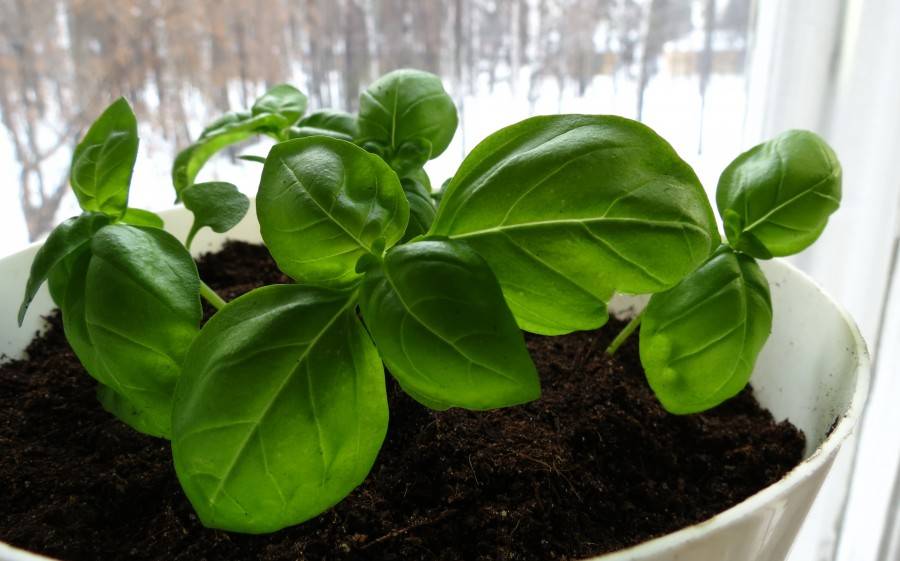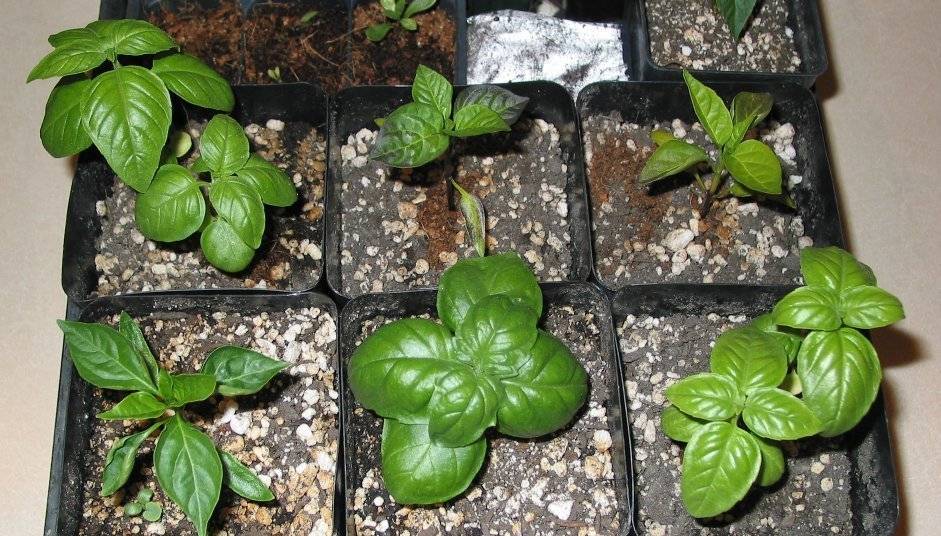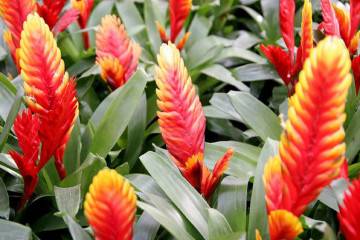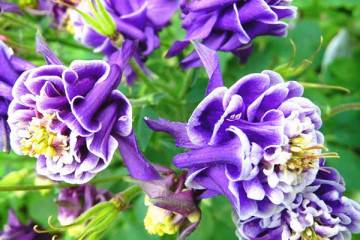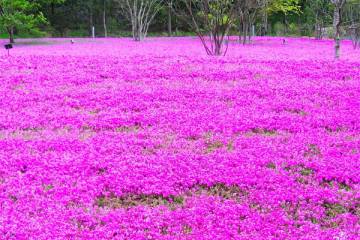Basil - growing from seeds at home on a windowsill
Content:
Basil is a plant that should always find a place in the garden. It is very useful, therefore it is widely used in cooking. Dishes to which this herb is added have an exquisite taste. Basil is very beneficial for human health. But medicinal properties are not all that the plant is famous for. It has a wonderful smell, is capable of repelling insects, and also looks quite beautiful, so it can be used as a decorative decoration of a garden or apartment.
Basil: growing from seeds at home
In the absence of a summer cottage, basil can be grown literally on the windowsill. But for this you need to know the basic rules for caring for him.
Watering
Basil is a very moisture-loving culture. Therefore, for its proper growth, it is necessary to constantly monitor that the soil is moist. It is necessary to water the bush every day. In the event that soil moistening is not performed regularly, the leaves will lose their turgor state.
But when watering, you need to observe the measure, because if you overdo it, then a stagnation of liquid is formed in the soil. And this leads to the appearance of rot on the roots of the plant. It is also necessary to loosen the soil once every couple of days after moistening the soil.
Lighting
From early spring to late summer, basil will thrive in normal daylight. At other times of the year, a fluorescent lamp must be prepared for the plant, which will additionally illuminate the plant for at least 12 hours a day.
Top dressing
For the active growth of basil, it must be additionally stimulated with fertilizers. This procedure is especially important when the bush is planted in infertile soil. Compost is used as fertilizer. It should be entered no more than once a month.
Types and varieties of basil
There are many varieties of basil known today. They are categorized by leaf color and aroma.
Quite unusual varieties can be considered as an ornamental home plant.
Lemon basil
This species is grown every year, as it is annual. This sweet and American basil hybrid was bred specifically for culinary use. Its aroma contains notes of not only basil, but also mint. It can be used in the preparation of drinks and sauces for meat. The plant is quite unpretentious and quite easy to care for.
When planting a lemon variety at home, you need to take into account the fact that he loves sunlight very much. Therefore, it is advisable to place the pot with the plant by the window overlooking the lighted side of the house. It is also necessary to observe the temperature regime. Lemon basil must be grown in a room with a temperature of at least + 25 ° C. If you allow cooling to + 12 ° C, then the plant will stop growing.
Lemon Miracle
This variety has a very strong lemon scent and is often used as an additive in tea brewing.Although it is not a medicinal plant, it is still very high in vitamins. Therefore, it can be grown not only in the garden, but also at home, so that later in the winter time you can enjoy its aroma.
Lemon miracle is used in the preparation of compotes, it is added to fruit salads and baked goods.
Naturally, there are many other varieties that can be used at home. The choice of these types is due to the fact that many gardeners do not know about this type of basil and, accordingly, how to use it.
Planting basil seedlings at home
Before planting basil at home, you should prepare well for this. You need to know the basic rules for caring for a plant. If you follow them, then soon the flower will decorate the apartment.
Soil preparation
In order for the sowing to be successful, it is recommended to immediately select a high-quality substrate. It is preferable to use fertile, loose soil, with good moisture and air permeability. If there is no large selection of soil options, then it is allowed to purchase a universal land that is used for vegetable seedlings.
But if you wish, you can make a substrate with your own hands. To do this, mix the following ingredients in equal parts:
- land,
- peat,
- humus.
Seed sowing
Any plant variety is suitable for this growing method. The disembarkation is performed sequentially:
- A small container is prepared, with a volume of about 2 liters.
- The seeds are soaked in spring water for 24 hours. After that, they should be dipped in a weak solution of potassium permanganate for a couple of hours.
- The bottom of the pot is covered with a drainage layer. Expanded clay is ideal. The soil is filled up.
- The seeds should be planted at a distance of 2 cm from each other and lightly sprinkled with earth.
- The container with seedlings is covered with a transparent film and placed in a warm room. Crops are aired daily and sprayed with water.
After about 10 days, the first shoots appear, after which the film is removed.
In order for the seedlings to be in order, appropriate conditions must be maintained. Before sprouts appear in the room, the temperature should be about + 24 ° C. Subsequently, in order to avoid pulling the plant up, the room should not be warmer than + 20 ° C.
When the first shoots appear, the container with them is moved to the most illuminated window. The basilica needs at least 12 hours of light, so it is recommended to install additional artificial lighting.
Plant pick
Basil tolerates the transplant without any problems, so no special conditions are needed for this procedure. The pick is carried out according to the following scheme:
- Watering the seedlings is performed before transplanting.
- Separate picking cups are filled with soil.
- Holes are made in the middle of the soil.
- The seedling is removed from the common container along with a small clod of soil and transferred to a new location.
- The hole is covered with soil and crushed a little.
- Watering in progress.
Basil on the windowsill: growing rules
In order to decorate your home interior, it is recommended to plant several different types of plants at once. Basil varieties are selected so that they are about the same size and ripen at different times, replacing each other.
Harvesting and cutting
In order for the bush to be voluminous with a large number of leaves, it must be pinched regularly.
You can enjoy the first harvest about 2 months after the bush was planted in a separate pot. When he has 4-6 leaves, two of them are cut from the top and used for their intended purpose. Then, as the basil grows, its tip is regularly pinched.
If you need several pieces of paper for cooking, then the oldest and bottom ones should be chosen first. They are cut off at the point of abutment to the main stem. It is necessary to constantly monitor that the bush has at least 4 leaves at the bottom. If you get carried away by cutting off the lower shoots, then the basil will begin to grow in height, which will cause its yield to fall. When buds appear, they must be removed immediately. The emerging flower will spoil the quality of the spice.
Thus, the plant can be grown both for further transplantation at the summer cottage, and for using it when preparing food right at home. If you adhere to the basic rules, then growing a spicy bush will not cause much trouble. Indoor basil will not only be a decorative decoration. It can be used as a flavoring additive in the preparation of various dishes and seasonings.
